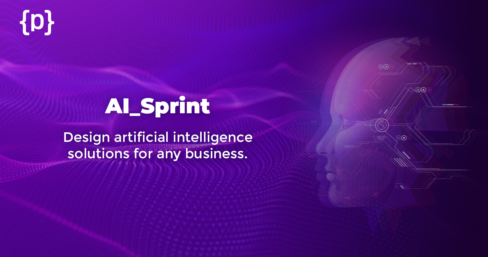Learn more about the strategy that combines efficiency and innovation for companies looking to be successful now and in the future.
The new economy brough a fundamental need companies need to work on: adopting an ambidextrous management.
For some people this might be a new term, but this theory emerged in the 1970s and is still more current than ever.
With the constant market changes and the ever-faster advancement of technology, looking at innovation while managing the current operation has become an indispensable practice for companies that wish to continue growing.
This article will raise important topics to understand this strategyl highlighting the challenges and real advantages of those who already apply the concepts of organizational ambidexterity, with a tip from our expert.
Enjoy your reading!
What is Organizational Ambidexterity
This term was first coined by researcher Robert B. Duncan in 1976 to describe the following context:
“Organizational ambidexterity serves to accommodate the conflicting alignments needed for innovation and efficiency.”
Today, organizational ambidexterity is defined as a strategy to simultaneously develop two skills: innovation, thinking about future success and staying competitive in the market, while improving efficiency in present deliveries.
In summary, the expression applies to companies that manage to move between day-to-day control, while feeding the more visionary side of the business.
Benefits of the ambidextrous strategy
When a company chooses to focus only on its current operation and not invest time in innovation, there is a risk of becoming obsolete, failing to create and capture opportunities that could guarantee its competitiveness for another 5 or 15 years.
With the ambidextrous strategy, while the company continues to work to ensure its leadership, it also invests in ideas to win over and retain consumers through new services, providing relevance in both scenarios.
Learn more about the advantages of this strategy:
– Raise the competitive potential;
– Gain scalability;
– Increase productivity.
How to implement Organizational Ambidexterity
In addition to external issues, such as market dynamism and competitiveness, we cannot forget the internal factors that make all the difference when implementing organizational ambidexterity.
The success of this strategy essentially depends on the integration between processes and people, that said, what turns the key and makes a company ambidextrous is the cultural transformation.
In a practical way: the structure of a company’s internal processes reflects on the way people work and create.
When these processes go against the culture of innovation, the changes reflect on the company’s products and services, causing positive impacts on the business.
Expert tip
We talked to Leonardo Pinheiro, our CINO – Chief Innovation Officer – who gave practical tips for those who want to start thinking about organizational ambidexterity, in 3 steps:
The first step is to create a strategy focused on the 3 innovation horizons:
– H1 Core: work on creating processes to save time and execute day-to-day tasks in an intelligent way;
– H2 Adjacent: investing time to create business opportunities adjacent to the core business;
– H3 Transformational: process to test and experience what may impact your market in the future.
The second step is to establish a strategy that focuses 80% to 95% of the organization’s energy on its core (H1), with the aim of gaining time and maturity in new ways of obtaining results for short-term challenges.
The third step is to use evidence from the application of the new way of obtaining results, using the time gained through the new practices to establish a strategic map, which will balance the distribution of the organization’s focus among the 3 innovation horizons.
Please note that, for this strategy to work, we need to break the paradigm that what brought us here will take me into the future, because in fact, what will take us there are innovations.
To learn more about the importance of applying this strategy, access the study by Harvard Business Review.
Conclusion
Performa_IT understands that implementing ambidexterity can be a challenging process for companies that need to create this new mindset, so we offer training and workshops to develop skills in both aspects of ambidexterity, in addition to supporting companies in implementing culture changes organization at all stages of the process.
Want to learn more?









